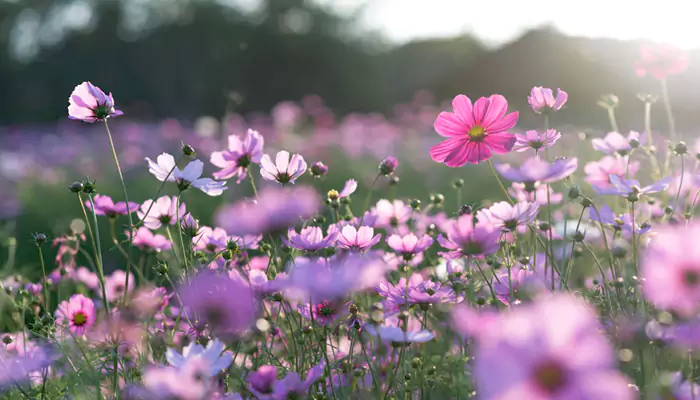Nature’s Changing Colours Make Climate Change Visible To All: Here’s How
- Rinks
- 1 year ago
- 3 minutes read

Explore how nature's changing colours highlight the impacts of climate change, making the global crisis visible.
Climate change is no longer a distant or abstract concept. It is a tangible reality manifesting vividly in the world around us. One of the most striking ways this phenomenon is brought to life is through the changing colours of nature. From altered foliage patterns to shifting coral hues, these changes serve as visual indicators of the planet's evolving climate. Here’s how nature’s changing colours highlight the impacts of climate change and what they mean for our environment. Read on!
Shifting autumn foliage
The brilliant reds, oranges, and yellows of autumn foliage are undergoing noticeable shifts due to climate change. Warmer temperatures and altered precipitation patterns are affecting the timing and intensity of fall colours. Trees like maples and oaks, which typically turn vibrant hues, are experiencing delays in colour change or duller pigmentation. This disruption not only affects the aesthetic beauty of forests but also has broader ecological implications, impacting the timing of leaf drop and the overall health of forest ecosystems.
Early blooming of flowers
Warmer temperatures are causing many plant species to bloom earlier in the spring, disrupting established seasonal cycles. Flowers such as cherry blossoms and daffodils are blooming days or even weeks ahead of their historical schedules. This shift can lead to mismatches in the timing of pollination, affecting the reproductive success of plants and the survival of pollinators like bees and butterflies. Early blooming also impacts agricultural productivity and the timing of cultural festivals centred around these natural events.

Changing colour of glaciers and icebergs
Glaciers and icebergs, typically seen as pristine white or blue, are showing alarming signs of change. Melting ice exposes underlying sediment, leading to the darkening of ice surfaces. This darkening accelerates melting because darker surfaces absorb more heat. Additionally, algae blooms on ice surfaces, fuelled by warming temperatures, are causing patches of red, green, or brown to appear. These visual changes highlight the rapid melting of polar ice and its contribution to rising sea levels, which threaten coastal communities worldwide.
Altering colours of animal fur and feathers
Wildlife is also visibly affected by climate change, with some species altering their fur or feather colours in response to changing habitats. For example, animals that change colour with the seasons, like the Arctic hare or ptarmigan, are struggling to synchronise their camouflage with the increasingly erratic snow cover. This mismatch makes them more vulnerable to predators. Such shifts in colouration underscore the broader impacts of climate change on animal behaviour and survival.
Transformation of grasslands and deserts
Grasslands and deserts are experiencing significant changes in vegetation colour and composition due to shifts in temperature and precipitation. Prolonged droughts and altered rainfall patterns are leading to the browning of grasslands and the expansion of desert-like conditions. These changes impact the flora and fauna adapted to these regions and threaten the livelihoods of people who rely on these ecosystems for grazing and agriculture. The visual transformation of these landscapes is a stark reminder of the far-reaching effects of climate change on terrestrial environments.
Nature’s changing colours are a compelling and visible testament to the impacts of climate change. These shifts remind us that climate change is a present and pressing reality. Observing these changes provides a powerful impetus for action, urging us to mitigate our environmental impact and preserve the natural beauty and balance of our planet.












.webp)